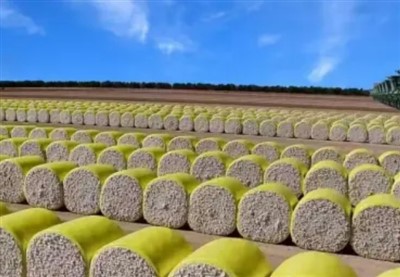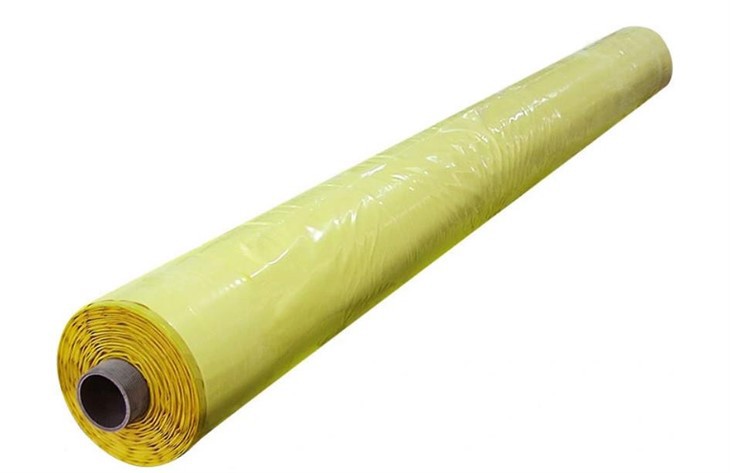How to test the tensile strength of cotton bale wrap film
2025-04-26
The tensile strength of cotton bale wrap film is tested mainly through the following steps and methods:
1. Preparation of test equipment
Tensile testing machine: This is the core equipment for testing tensile strength. It requires high precision and can accurately measure the tensile force applied to the sample. It also has different tensile speed setting options to meet the test requirements of different materials.
Fixture: According to the characteristics of cotton bale wrap film, select a suitable fixture to ensure that the sample can be firmly clamped during the test, and will not slip or break at the fixture, affecting the accuracy of the test results.
2. Sample preparation
A certain number of samples (usually not less than 5) are cut from the cotton bale wrap film to be tested. The shape and size of the sample should meet the requirements of relevant standards. It is generally a long strip with a width of 15-25 mm. The length depends on the requirements of the specific testing machine and the properties of the film, and is generally not less than 150 mm.
Ensure that the surface of the sample is flat, without obvious scratches, bubbles or other defects, and be careful to avoid additional stretching or damage to the sample during the cutting process.
3. Test steps
Install the sample on the fixture of the tensile tester, make sure that the longitudinal axis of the sample is consistent with the tensile direction of the tester, and ensure that the fixture clamps the sample evenly to avoid local stress concentration.
Set the tensile speed of the tensile tester. For Cotton bale wrap film, the tensile speed is usually set between 50-200 mm/min. The specific value can be adjusted according to the material and thickness of the film.
Start the tensile tester and start stretching the sample, while recording the force and displacement data during the stretching process. During the stretching process, closely observe the deformation of the sample until the sample breaks.
After each sample is tested, record the maximum tensile force and corresponding elongation at break, and calculate the stretching degree. The stretching degree is usually expressed as elongation at break, and the calculation formula is: elongation at break (%) = (length at break - initial length) / initial length × 100%.
After testing all the prepared samples, the statistical parameters such as the mean and standard deviation of the tensile strength of these samples are calculated to evaluate the overall performance and discreteness of the tensile strength of this batch of cotton bale wrap film.
1. Preparation of test equipment
Tensile testing machine: This is the core equipment for testing tensile strength. It requires high precision and can accurately measure the tensile force applied to the sample. It also has different tensile speed setting options to meet the test requirements of different materials.
Fixture: According to the characteristics of cotton bale wrap film, select a suitable fixture to ensure that the sample can be firmly clamped during the test, and will not slip or break at the fixture, affecting the accuracy of the test results.
2. Sample preparation
A certain number of samples (usually not less than 5) are cut from the cotton bale wrap film to be tested. The shape and size of the sample should meet the requirements of relevant standards. It is generally a long strip with a width of 15-25 mm. The length depends on the requirements of the specific testing machine and the properties of the film, and is generally not less than 150 mm.
Ensure that the surface of the sample is flat, without obvious scratches, bubbles or other defects, and be careful to avoid additional stretching or damage to the sample during the cutting process.
3. Test steps
Install the sample on the fixture of the tensile tester, make sure that the longitudinal axis of the sample is consistent with the tensile direction of the tester, and ensure that the fixture clamps the sample evenly to avoid local stress concentration.
Set the tensile speed of the tensile tester. For Cotton bale wrap film, the tensile speed is usually set between 50-200 mm/min. The specific value can be adjusted according to the material and thickness of the film.
Start the tensile tester and start stretching the sample, while recording the force and displacement data during the stretching process. During the stretching process, closely observe the deformation of the sample until the sample breaks.
After each sample is tested, record the maximum tensile force and corresponding elongation at break, and calculate the stretching degree. The stretching degree is usually expressed as elongation at break, and the calculation formula is: elongation at break (%) = (length at break - initial length) / initial length × 100%.
After testing all the prepared samples, the statistical parameters such as the mean and standard deviation of the tensile strength of these samples are calculated to evaluate the overall performance and discreteness of the tensile strength of this batch of cotton bale wrap film.
You Might Also Like
-

what are the advantages of cotton packaging film
-

How does pe protective film cope with high temperature environment
-

The Advantages of Cotton Wrap Film
-

Advantages of Cotton Bale Wrap Film
-

How Polyethylene Packaging Material Copes with High Temperature Environment
-

How to Remove Protective Transparent Plastic Film Without Damaging the Surface
